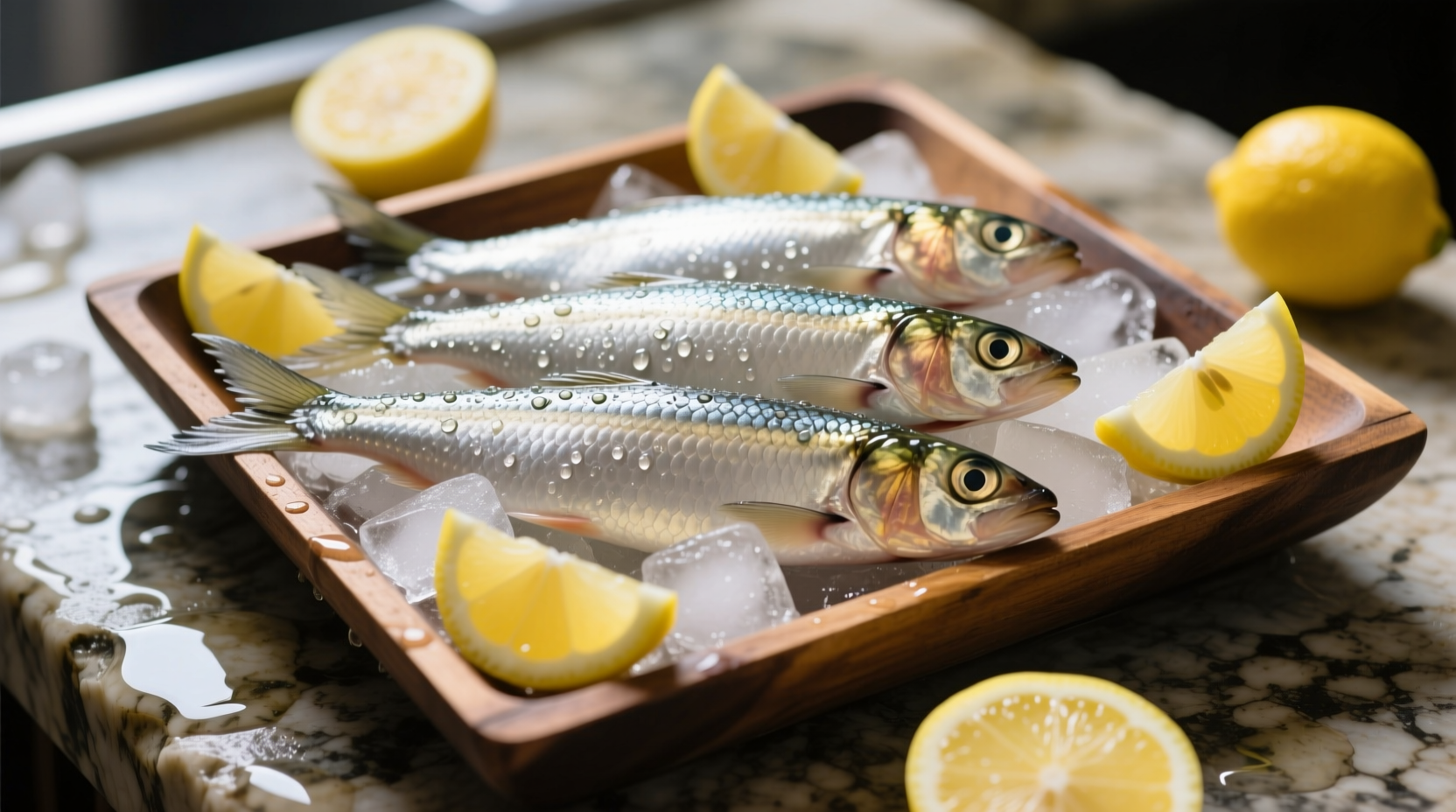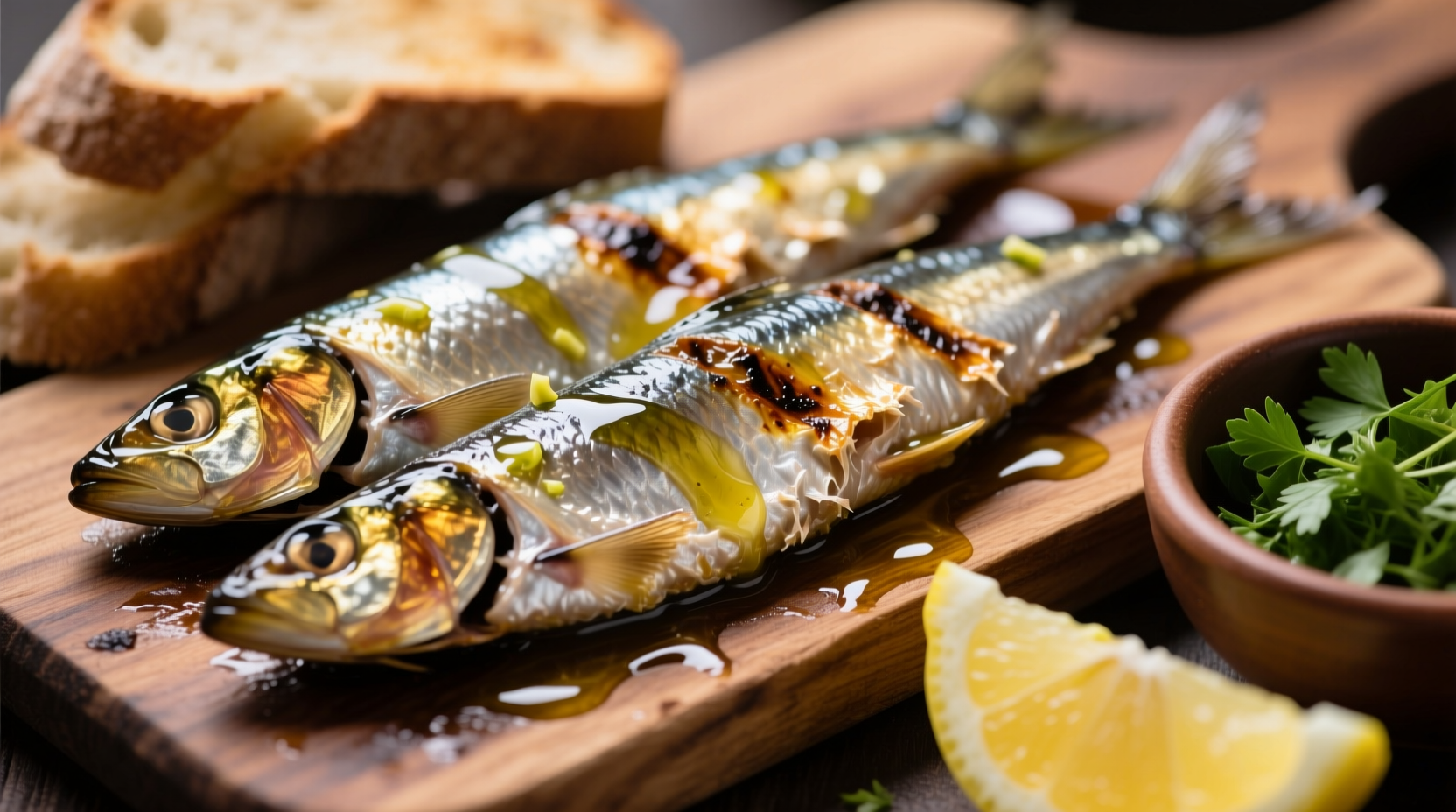Ever wondered what sardines actually taste like before popping one in your mouth? You're not alone. Many home cooks hesitate to try these tiny fish due to misconceptions about their flavor profile. Let's cut through the confusion with a professional chef's perspective on sardine taste characteristics that will transform how you approach this nutritional powerhouse.
The Essential Sardine Flavor Profile
Sardines deliver a distinctive taste experience that surprises many first-time eaters. Unlike the overpowering fishiness some anticipate, quality sardines present a balanced flavor profile:
- Umami foundation - Their high glutamate content creates that satisfying savory depth
- Briny sweetness - A clean oceanic note without excessive saltiness
- Oily richness - Their natural fats carry flavor compounds that coat the palate
- Subtle metallic hint - Only noticeable in lower quality specimens
"The biggest misconception I encounter," explains Antonio Rodriguez, chef and flavor specialist, "is that sardines taste overwhelmingly fishy. Properly handled sardines have a clean, almost nutty flavor that's remarkably approachable. It's all about understanding how preparation affects their delicate taste profile."
| Preparation Method | Taste Characteristics | Texture Profile | Best For |
|---|---|---|---|
| Fresh grilled | Clean brininess, subtle sweetness | Firm yet flaky, moist flesh | First-time sardine eaters |
| Canned in olive oil | Richer, more pronounced umami | Buttery, tender consistency | Salads and spreads |
| Canned in tomato sauce | Balanced acidity, reduced fishiness | Softer texture, sauce integration | Pasta dishes and sandwiches |
| Smoked | Earthy, wood-infused complexity | Firmer, slightly drier | Appetizers and charcuterie boards |
How Freshness Transforms Sardine Flavor
The difference between fresh and canned sardines creates dramatically different taste experiences. According to the FDA's seafood guidelines, proper handling immediately after catch preserves delicate flavor compounds that degrade rapidly.
Fresh sardines (ideally consumed within 24-48 hours of catch) offer:
- A clean, almost sweet oceanic aroma
- Firm flesh with translucent appearance
- Subtle flavor that pairs beautifully with citrus and herbs
Canned sardines undergo flavor transformation during the sterilization process. The Seafood Health Facts initiative from leading marine research institutions confirms that the canning process actually enhances certain flavor compounds while preserving nutritional value. This explains why properly canned sardines often taste richer and more complex than their fresh counterparts.
Debunking the 'Fishy' Myth: What Affects Sardine Taste
That dreaded 'fishy' taste people associate with sardines typically results from one of three factors:
- Poor handling - When not chilled immediately after catch
- Extended storage - Even canned products degrade over time
- Low-quality packing medium - Some manufacturers use inferior oils
Quality sardines shouldn't taste overwhelmingly fishy. The American Fisheries Society notes that sardines' natural flavor compounds break down into unpleasant trimethylamine only when improperly handled. When stored correctly, sardines maintain their desirable taste profile for extended periods.

How Preparation Methods Change Sardine Flavor
Your cooking technique dramatically impacts sardine taste. Professional chefs leverage these transformations:
Grilling or Broiling
High-heat cooking creates Maillard reaction on the skin, developing complex caramelized notes that balance the natural oiliness. The slight char adds smoky dimension while preserving moist flesh.
Pan-Frying
When prepared with minimal oil (they're already fatty), pan-frying creates crispy skin while keeping interior flesh tender. A squeeze of lemon after cooking cuts through richness beautifully.
Raw Preparation
Increasingly popular in Mediterranean cuisine, fresh sardines can be served raw when impeccably fresh. The escabeche technique (marinating in vinegar and spices) transforms their flavor profile completely, creating a bright, acidic counterpoint to their natural richness.
Perfect Pairings: What Complements Sardine Flavor
Understanding sardine taste helps create harmonious pairings:
- Citrus elements - Lemon or orange cuts through oiliness
- Vinegar-based sauces - Balance richness with acidity
- Strong herbs - Rosemary, thyme, or dill complement without overpowering
- Toasted bread - Absorbs excess oil while adding textural contrast
For canned varieties, try mashing with capers, lemon zest, and a touch of mustard for a sophisticated spread that transforms the flavor profile entirely. This technique answers the common question: how to reduce fishy taste in sardines while enhancing their natural umami.
Why Sardines Taste Different Than You Expect
Several factors explain why sardines often taste better than anticipated:
- Small size - They accumulate fewer toxins than larger fish
- Diet - Feeding on plankton creates cleaner flavor than fish eating other fish
- Natural preservation - Their oil content protects flavor compounds
- Processing innovation - Modern canning techniques preserve freshness
When comparing sardines vs anchovies taste, you'll notice sardines have milder flavor and meatier texture. Anchovies undergo more extensive curing, creating a saltier, more intense profile that dissolves completely when cooked.
Getting Started With Sardines: A Taste Journey
If you're new to sardines, follow this progression to appreciate their flavor:
- Begin with canned sardines in olive oil (milder flavor)
- Try them simply dressed with lemon juice and cracked pepper
- Experiment with different packing mediums (water, tomato sauce, mustard)
- Move to fresh sardines grilled with minimal seasoning
- Explore traditional preparations from Mediterranean and Asian cuisines
This gradual approach addresses the question do canned sardines taste fishy by building your palate's appreciation for their nuanced flavor profile. Many find that after several exposures, they begin craving sardines' distinctive taste.
Final Thoughts: Embracing Sardine Flavor Complexity
Sardines offer one of seafood's most rewarding taste experiences when approached with understanding. Their rich umami flavor, nutritional density, and culinary versatility make them worth exploring beyond initial hesitation. Whether you're enjoying them straight from the can or preparing them fresh, recognizing what do sardines taste like—and why—opens doors to new culinary possibilities that surprise even skeptical eaters.











 浙公网安备
33010002000092号
浙公网安备
33010002000092号 浙B2-20120091-4
浙B2-20120091-4